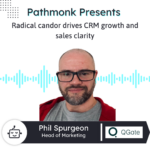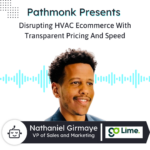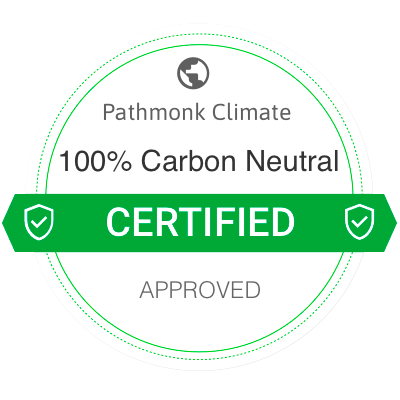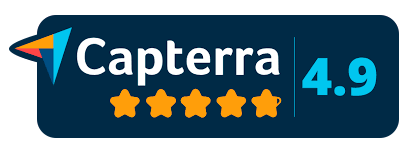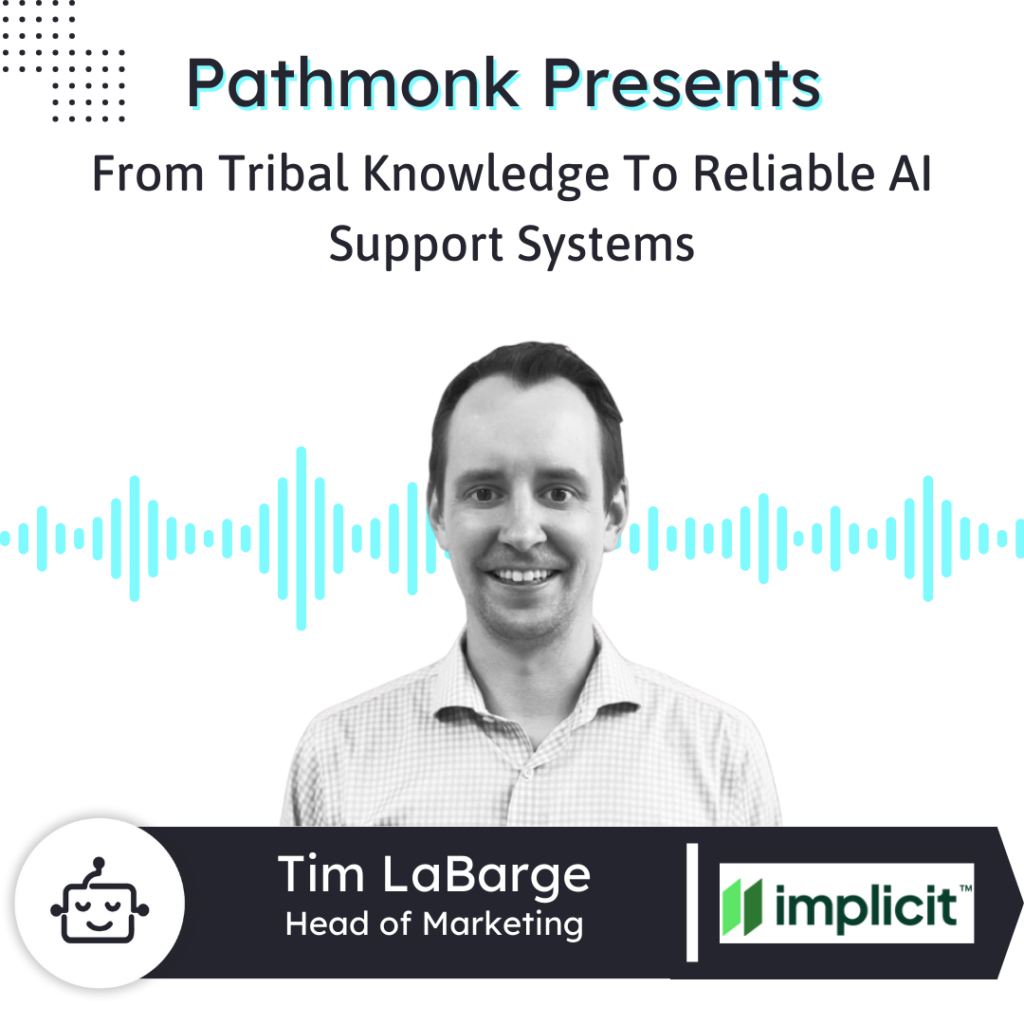
Introduction
Meet Tim LaBarge, Head of Marketing at Implicit—a platform built for complex AI support that answers hard, high-stakes questions by ingesting technical documentation and returning accurate, real-time guidance.
Tim explains how Implicit mitigates hallucinations with model guardrails and continuously improves answers through knowledge base tagging that flags gaps by product, error code, or scenario.
He breaks down their go-to-market mix—precise LinkedIn ads, high-value BDR outreach, and a thought-leadership newsletter, The Knowledge Layer—plus a freemium onramp that lets teams try Implicit before engaging sales. Tim also shares leadership insights on becoming a “builder” marketer and using founder-led marketing to accelerate trust and conversion.
Increase +180%
leads
demos
sales
bookings
from your website with AI
Get more conversions from your existing website traffic delivering personalized experiences.
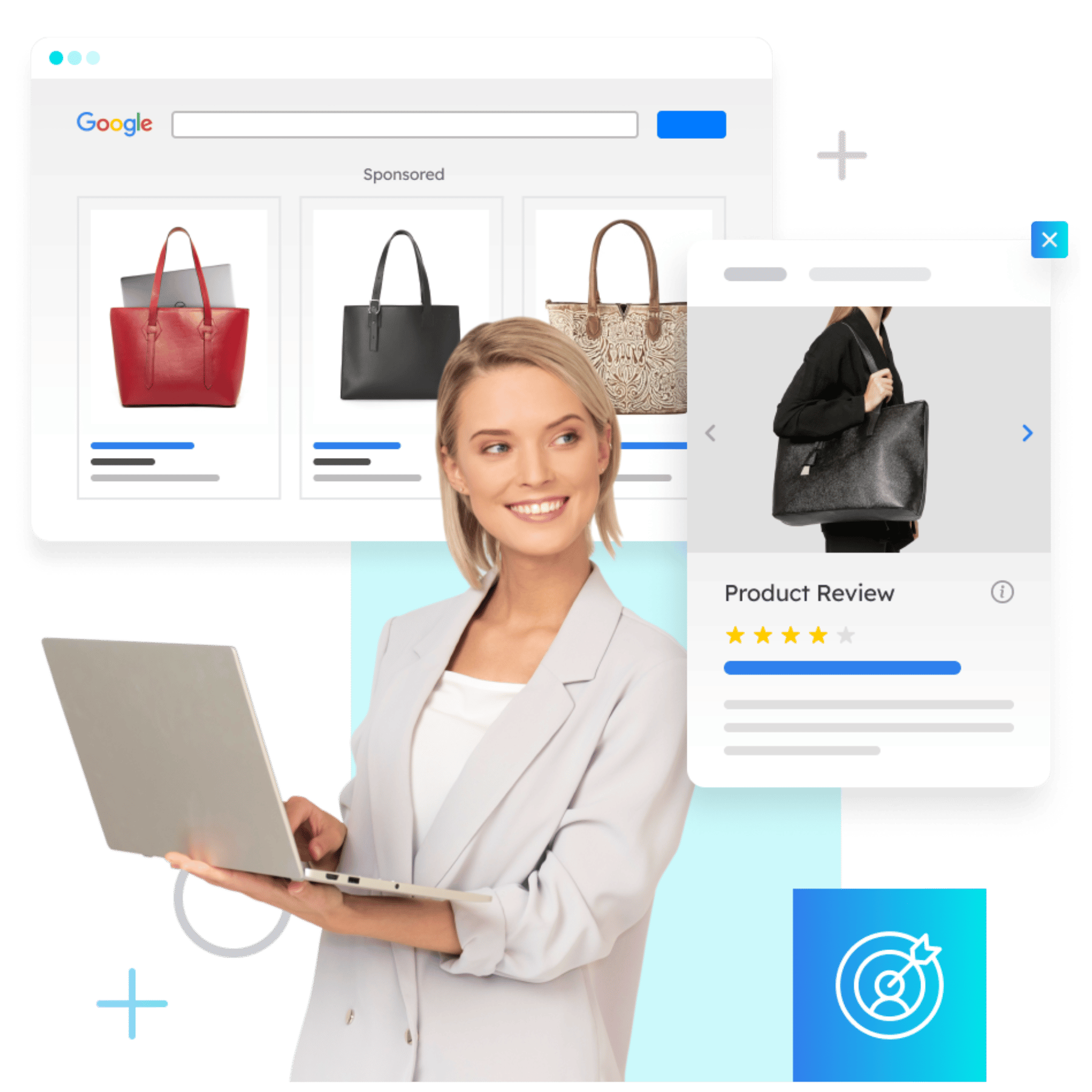
Rick: Pathmonk is the AI for website conversions. With increasing online competition, over 98% of website visitors don’t convert. The ability to successfully show your value proposition and support visitors in the buying journey separates you from the competition online. Pathmonk qualifies and converts leads on your website by figuring out where they are in the buying journey and influencing them in key decision moments with relevant micro experiences like case studies, intro videos, and much more. Stay relevant to your visitors and increase conversions by 50% by adding Pathmonk to your website in seconds. Letting the AI do all the work and increase conversions while you keep doing marketing as usual. Check us out on Pathmonk.com. Hey everybody. Welcome back to today’s episode of Pathmonk Presents. Today we are joined by Tim LeBarge. He’s the head of marketing at Implicit. Tim, welcome to the show.
Tim LaBarge: Hey Rick. Thanks so much for having me. Yeah, I’m glad to be here.
Rick: Glad to have you, Tim, and let’s get right into it. Tim, I want to talk about Implicit a little bit before we maybe talk about yourself and your role and your job as a leader, but in your own words, Tim, can you tell us a little bit what’s the heart of what your company does and how would you describe it to someone new that’s never heard about it?
Tim LaBarge: Sure. Happy to do it. Implicit, at our core, we do what I like to call complex AI support. So think: there are a lot of AI tools, AI agents that do AI customer service. So, “Hey, I ordered the wrong pair of shoes and I ordered the blue ones, I want the green ones,” and AI can take care of that whole process. We specifically stay away from that type of AI customer service. We’re really focused on answering the hard questions, doing hard AI tasks that a lot of folks steer clear from. So think instead of “I ordered the wrong pair of shoes,” think, “I am trying to maintain a Boeing 747 engine and I’m getting this error code and I don’t know how to fix it.” So the idea is that you can dump all of your documentation — whether that’s support documentation, maintenance processes, procedures — into our platform. Our AI parses it, distills it down, understands all the context, and then you can, for lack of a better term, chat with your knowledge base and get those answers in real time.
Rick: That’s pretty sweet. So it’s not the simple, as you said, ordered wrong size or anything of that, which is fair enough, it’s simple enough, let’s say. But, “I got this error code for a Boeing…” — yeah, that sounds pretty complex. That sounds like a very useful tool to have at hand when you do have that problem, right? ‘Cause maybe you don’t always have that person, that support person at hand. Having an agent, let’s say, will help you out with that. Am I off on that or?
Tim LaBarge: Yeah, no, that’s correct. And that’s the issue that we see a lot with these teams is that there’s a lot of what we call tribal knowledge. There are a lot of folks who have this information in their head, but the trick is getting it into some sort of documentation and loading it into a system where you can quickly, accurately, and consistently get the answers you need to be able to solve those problems. So I gave the airplane example. Aviation, aerospace is definitely a place that makes sense for our product. But think other complex-type organizations. So a lot of software/hardware-type organizations make a lot of sense where you’ve got a lot of interconnected parts and pieces and systems. Or cybersecurity — cybersecurity is another space where there’s a lot of complexity. And we try to really embrace, like I said, answering the hard questions, doing the hard tasks. And there’s obviously still always risk with AI, so a lot of folks want to steer clear of those more risky, more difficult scenarios. And that’s where we try to step in and be the solution to that problem.
Rick: Got it. Okay. So when these companies come to you, I’m sure they have plenty of problems that you help them solve with this agent and your solution. But is there a core problem that you see maybe as a pattern that comes out — out of automotive, or out of the airplane industry? Is there anything that you think you guys help solve that’s the core issue for many of them?
Tim LaBarge: Yeah. So the two things that we try and really lean into: one is accuracy. AI hallucinations or AI inaccurate responses is a really key issue. And that comes from one of two places. The hallucinations come from having an AI model that is properly tuned and using the latest and greatest in that technology to make sure that it’s… and that you’re putting up barriers and boundaries so it’s protected from those hallucinations. And the second is having a knowledge base or having documentation that is accurate and up to date. And we have some tools within our system that help you identify where there are gaps in your knowledge base and in your documentation. So you can see, for example, based on all the questions that are coming into the platform, all of the responses that are going out, and whether those responses are flagged as positive or negative, our system can flag certain products or certain error codes or certain areas within your knowledge base and say, “Hey, this looks like an issue. This is an area where you need to clean up your knowledge so that when people ask that question, they’re getting the correct response.” So those are the two things that we see a lot that we try and bake into our product and build into our solution.
Rick: Got it. Okay. Now it sounds like it’s able to categorize all these issues and then make it easier for people to understand where they’re going or what’s needed actually for the person that’s asking that information.
Tim LaBarge: Yeah. So one of the key things that our system does is it tags all of what we call products. So that could be: if you have a whole line of products, or in the case of a Boeing airplane, it could be: one product is the engine or this engine component. Another product is, I don’t know, the cargo hold. Another product is the wings or the tail… So we tag all of these different products and then we also tag all of the situations or issues or problems that could occur for each of those products. So by having these different tags, we’re able to then reference and say, “Hey, for the engine or for the tail, we’re getting all sorts of questions flagged as this is an inaccurate response.” So that’s how we zero in on the areas that need to be cleaned up.
Rick: Got it. That’s pretty smart. Listen, product sounds super interesting. But I would like us to step back for a second and talk about marketing. ‘Cause if I go off on a tangent, then we’ll only talk — which I’m sure is great — but we’ll only talk about the product. I want to hear a little bit of marketing. You are the head of marketing, so we definitely want to get some knowledge from you. How do most people discover Implicit and, as the head of marketing, do you see any marketing channels at the moment that have become your go-to for bringing new customers?
Tim LaBarge: Yeah. We have two primary channels where we get the most engagement today. One is through our paid social campaigns. So we, at the moment, are leaning pretty heavily into LinkedIn, largely due to the fact that we can be much more targeted in our outreach. We know we’re hitting the right person with the right message — ideally at the right time. It comes at a bit of a premium; it’s a bit more expensive than some of the other ad channels, but for us that’s where we’ve seen a lot of great traction. And then the second is — I’ve got two others — the second is we do a lot in the way of outreach. We have a team of BDRs that are actively reaching out to folks in our ICP and we’ve got a lot of content that we like to distribute to them and build that rapport and show that value. So again, a lot of that happens through LinkedIn, some through calls and email, but LinkedIn is really where we get the most traction these days. And then I would say the third is: we recently launched a newsletter. We call it The Knowledge Layer. So that’s how we refer to everything that happens behind the scenes before your AI spits out an answer — it’s like the knowledge layer, right? Here’s where all the documentation and the tagging and the extraction and all the more technical, less sexy part of an AI chatbot — but the part that really generates the value. So we call our newsletter The Knowledge Layer. So we recently launched that. We get a lot of engagement through that, and it helps us again carve out a space in terms of thought leadership and having a pulse on the industry and conveying that value.
Rick: Okay. That’s interesting. So yeah, LinkedIn ads, right? Sounds that’s a good place to be for you guys. And you’ve got the newsletter just launched. Now is all of that funneling through to your website? And how does that funnel look — top of funnel, mid funnel, and then bottom of funnel — in order for people to get to try the product? How does that work for you guys?
Tim LaBarge: Good question. So in terms of the LinkedIn ads, we have a handful of different campaigns. A lot of those campaigns are actually staying within the LinkedIn ecosystem today. So it’s a lot of CTAs for “download an ebook,” “download a document,” “get more information.” So in that case it doesn’t push them through to our website directly. We’ve actually found more success in terms of generating MQLs and interest if we don’t take them out of that workflow or take them out of that experience where they already are. They may be more interested in clicking and engaging if they know they’re not going to get booted off to a new site. So that’s the first engagement. And then from there we actually lean pretty heavily into the founder-led marketing playbook. In our case, our CEO is not our founder, but our CEO really takes a heavy role in engaging with these folks and pulling them into our ecosystem and conveying the value that we can provide. So he’s really the face of the company and the point of contact for those folks once they engage. So that’s the middle-of-funnel nurturing phase — a lot of communication from him, whether it’s through social media or through email marketing. And then as we get more towards the bottom of the funnel, he would often lead our discovery conversations and take them through a demo of the product. And if there’s a fit at that point, then we pull in the engineering team and make sure they understand the ins and outs of how it works technically. But that’s a traditional flow of how those LinkedIn ad campaigns would run.
Rick: Got it. Okay. And so at the end of the day, it will be about people getting on a call with you guys or your sales team and trying to understand the product and discover the product a little bit more. Is there any way for them to… there are some interactive demos out there… is there a way for your customers to actually get to interact with it, see what it’s like, or?
Tim LaBarge: Yeah. Good question. Part of that interim process between the time that they would engage initially and when they would have that call — there’s a lot of communication going out through our CEO — but a lot of that, or a few of those connection points, would be pushing them to our new freemium product. So about a month ago we launched Implicit Free, which allows folks to register, sign up, and get access to a light version of the platform out of the gate. So this is a way of reducing friction at that top/middle-of-funnel level. Give folks an opportunity to see it, touch it, experience it, see what it’s all about. And they can — it’s got full functionality. There are some limits in terms of the number of users and the amount of documentation you can upload, but it’s the full product. You get the full experience. So that’s something we’re really excited about, and it’s a way for people to make their way through the funnel if they’re not ready to engage with someone in an active conversation.
Rick: Okay. Yeah, that’s an interesting model. And I feel that will have to be the model for many companies — doesn’t always work, but I see as a user, as a consumer myself, I do love a free product that I can try so that I get my bearings, and then maybe I get attached to it in some way. And then obviously the next natural step is to become a paid user. That’s how most of them work.
Tim LaBarge: Yeah, and in the AI support space, there are a lot of options out there for a free trial — “try 14 days.” There are very few that have a full freemium experience where you can just exist as a free user for as long as you want. And ideally they’ll go through that upgrade path, but it’s not a requirement.
Rick: Okay, got it. Now Tim, I want to switch gears for a second and talk about you as a leader, and I also want to combine that with the rapid fire segment of this podcast, which is basically a set of a few engaging, let’s say light questions that we want to ask you. The only rule that we have for it is that we need a concise answer. Would you be ready for that?
Tim LaBarge: Let’s do it.
Rick: All right. Let’s do it. When it comes to your day, what are the main three things that you focus on when you get to work?
Tim LaBarge: When I get to work, I would say three things. One is I always check our pipeline activity — see what sort of activity we’ve got going on there. The second is I check our lead generation campaigns. And the third is connecting with the team — not necessarily in this order — but making sure that everyone’s clear on: here’s what I’m going to do today, tomorrow, the next day, and what the priorities are moving forward.
Rick: Okay. Now, when it comes to content, do you prefer creating it or consuming it?
Tim LaBarge: I would prefer to be a creator.
Rick: Okay. Very good. On the consumer side of things, do you prefer watching, reading, or listening?
Tim LaBarge: I would probably say listening. I do a lot of listening while performing other tasks. Like we talked about, I’ve got a big family, I’ve got a busy day, I’m always doing something. So if I can consume that content while I’m doing something else, that’s the ticket for me. It’s classic habit stacking.
Rick: Right? I don’t know if you’ve read Atomic Habits.
Tim LaBarge: Yep, I have.
Rick: Okay, awesome. Now what’s the latest piece of content — could be a podcast, an audiobook, whatever — that you listened to, that you picked up? Were there any ideas or gems that really stuck with you?
Tim LaBarge: Yeah, so I recently listened to a book called The Comfort Crisis. This is about how our modern society is making us… because everything is so easy. We can have food delivered directly to our house if we want; we don’t have to leave our house at all. The comforts of modern-day life make us less resilient and weaker and less creative. So this book was all about rewiring your brain so that you can continue to be creative and resilient and get the most out of your life.
Rick: Yeah, it’s not the first time I hear that book and I agree with the premise. So I think it would be an interesting one to pick up for me personally and for some in our audience. So thanks for the…
Tim LaBarge: Yeah. The thing that really stuck with me about that — I know I’m trying to be concise here — the thing that really stuck with me, especially in marketing, was the piece about creativity. So as we are living a life of constant stimulation — we’re on computers a lot, our phones are notifying us all the time — it takes a toll on your brain. So there’s very little left for creative thought. And it takes time and energy and effort to be creative and to create something new. So by going back to how our brain needs to operate a little bit more — slowing things down — you can facilitate more of that creativity.
Rick: Okay. Yeah, that’s an interesting concept. It’s like the opposite of “you can’t pour from an empty cup,” in the sense that if you overflow it instead with content or just being always on, then it will be really hard to be creative. At least that’s one of the takes that I think is interesting. Now, Tim, if you had a magic wand and could fix one frustrating thing in your marketing life with tech, what would it be?
Tim LaBarge: Yeah. So one thing — I did give this one some thought — if I could wave a magic wand, it would be about targeting and about focus. Sometimes I feel like marketing and advertising get a bad reputation because it’s like we’re trying to trick folks into filling out a form or signing up for a trial. And it’s really, from my perspective, not about that. It’s: Hey, we have a product that can solve a problem. So if I could wave a magic wand and say: I want to be able to cut through the noise to our ICP and convey to them, “Here’s really what we can do to help you,” and not feel like it’s a cat-and-mouse game. It’s that ability to cut through the noise and say, “Here is really what we can do to help you. We can help you solve this problem that we know you’re experiencing.” So that targeting piece — identifying here are the people who are actually experiencing that problem, and here’s the message and the time that can get conveyed to them in a way that it’s going to really resonate — those are the things that… that’s kind of the holy grail in marketing. But those are the things that I feel like I’m always fighting against and trying to figure out and problem-solve. That’s what comes to mind for me.
Rick: Yeah, I was gonna say: if you find a way or no-bench solution, then please share, because I’m sure there’s plenty of people out there that are interested in that. So Tim, just a last one for you. If you could go back in time and give your past self a quick pep talk — at the beginning of your journey — what kind of advice would you give yourself?
Tim LaBarge: Yeah. I think especially the way things are evolving over the past couple of years with all of the new tooling and AI being incorporated into the majority of tools that are available, I would tell myself to increase my technical skills — to become a builder in a marketing sense. This is something I’m working on now. Even in a leadership role, this is really crucial: to be able to get tactical and understand “Here are the different things that I can build as a marketer that can help our business scale, help us target the right customers, help us convey our message to an audience.” In a startup environment, how do we connect with a large number of people in a short amount of time for a low cost? What are the different hacks, so to speak, or the different tools we can use to build those types of programs? And that’s really crucial. It’s always been crucial, but it’s even more crucial today because a lot of the creation — especially content creation and other things — are going to be outsourced to AI in a lot of organizations. I would tell myself: become a builder. Understand how things work, how they fit together, and be able to take a project from point A to point B. And that’s, I think, the future of a full-stack marketer, whether they are an individual contributor or all the way up through a leadership level.
Rick: That’s a great point. Yeah. I love this question because it’s for your past self, right? But the advice is so relevant to yourself today and I think many other marketers out there. Thanks for sharing that. That was really good. Tim, of course, I want to thank you for being with us on the show today, and I want to give you the last word as we wrap things up. If someone forgets everything about the interview today, Tim, what is the one thing they should remember about your company and the work you guys are doing?
Tim LaBarge: Yeah, I appreciate you asking that. It’s really that there is a really crowded space of AI tools now, and it’s going to continue to get more crowded before it thins out, I think. But what we’ve found is that the key to success when leveraging AI tools is… it’s not about larger, bigger, faster models. It’s about more honed, more targeted, more specific models. And that’s what we try to lean into — whether you’re verticalizing your solution or honing it to a specific industry or use case within an organization. It’s really hard to get those results out of a really large language model. So leveraging a tool like Implicit or others out there can really drive much more targeted, much more productive results for your team, for your organization. And that’s where we try to carve out a niche, and what I think a lot of folks who are new to AI are still trying to understand.
Rick: Beautiful. If someone wants to check you guys out, see what you’re about and maybe get in touch with you, how can they do that?
Tim LaBarge: Yeah, you can find us online. We’re at implicit.cloud — so that’s where you can find our website and get the rundown on our product and our organization. We’re also obviously on LinkedIn. So those are probably the two best places where you can learn about us and see what we’re up to. And we’re always publishing content. And like I said, you can check out our newsletter called The Knowledge Layer. You can sign up for that on our website as well.
Rick: Amazing. Tim, thank you again for being with us today and wish you a wonderful day.
Tim LaBarge: Yeah, thanks Rick. Thanks for having me. It was fun being here.
Rick: All right. See you again. Bye everyone. Thanks.
Tim LaBarge: Bye.





